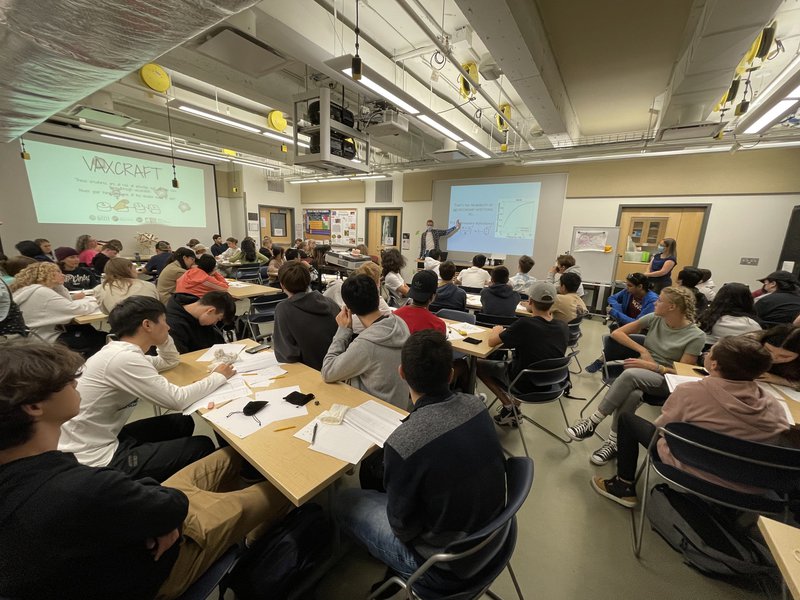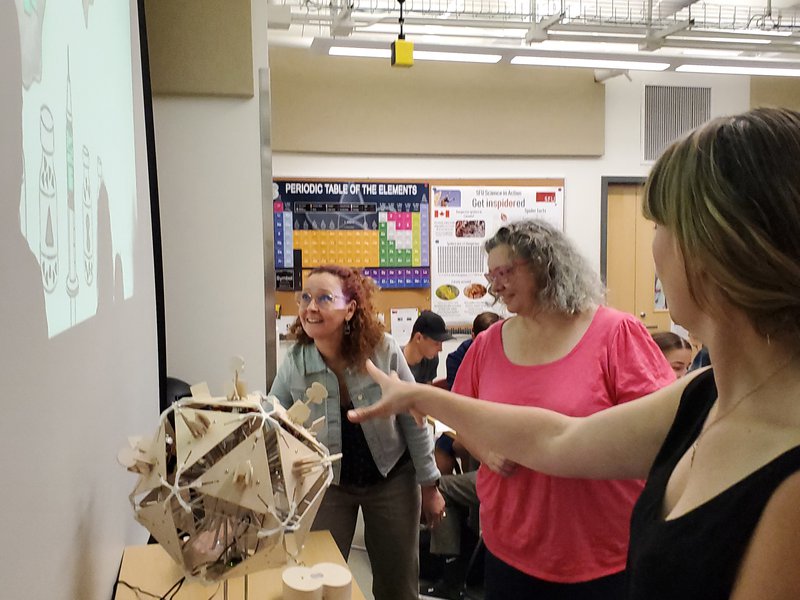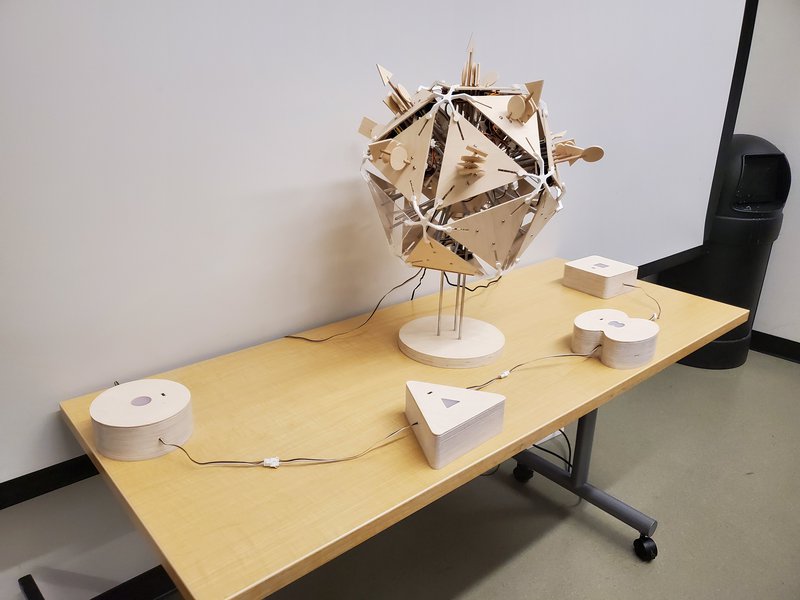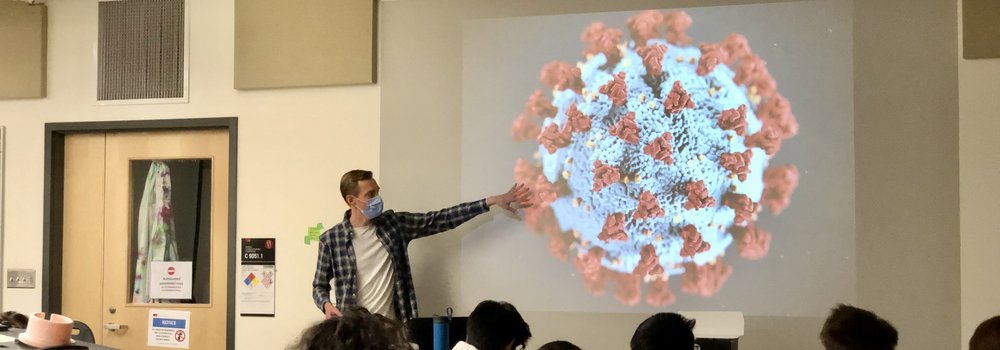Guest post written by Dr. Ben Ashby
Vaxcraft received its first public outing as part of Canada’s Science Literacy Week (19-25 September 2022), where the theme for this year was “M for Mathematics”.
As part of a day of activities at Simon Fraser University in British Columbia, Dr Ben Ashby, an Associate Professor in the Department of Mathematics, ran a 90-minute workshop with around 80 students from local high schools. During the workshop, students learned about the mathematics of infectious diseases, simulated epidemics using a counter-based game, and experimented with vaccinations and evolution using the Vaxcraft game.

While the Viruscraft and Viruscraft II were about how viruses co-evolve with their host populations, Vaxcraft is all about how viruses can evolve to evade vaccines. Players must choose which antigens (shapes on the virus) to vaccinate the population against, and when to do so. The changing make-up of immunity in the population causes the virus to evolve new antigens, which allow it to evade immunity. Players therefore need to keep a close eye on how the virus evolves, just like scientists do in the real world with viruses such as those that cause influenza and COVID-19.
The students (and teachers!) really enjoyed playing Vaxcraft and learning about how viruses evolve in response to the build up of immunity in the host population. The robotic virus, with its shifting antigens, was a big talking point and it really helped to not only demonstrate that viruses are constantly evolving, but also that they can evolve in response to things that we do (e.g., vaccination).
With one student controlling each shape for the vaccine, the students had to work together to identify the shapes on the virus and to find the best strategy. This gives a unique style of play and learning that isn’t possible with the screen-only version of the game.

As this was the first time that Vaxcraft has been used in public, the students provided some great feedback on how we can tweak the game in future, which we are now implementing, including:
- The speed needed is very different for a large classroom installation setting than it is for one person playing an online game. We're adding the possibility to the game down by adding an immunity time multiplier slider - this multiplies the time that immunity lasts in the hosts after vaccination, and can be accessed by the class leader via a secret page. This is the only direct time dependant setting we can do without getting into speeds and things with too many side effects. Setting it the new maximum means the hosts can last up to 24 seconds before needing re-vaccination.
- Simplifying the game dynamics - the link between mutation supply and viral abundance was too much to be understood in the short time frame of a class. We are detaching the mutation rate from virus population size and allowing these to be controlled via another slider in secret page (once every 1 to 60 seconds, default 10).
- While the levels work for the online version, with the robovirus in a large class setting they didn't really work - often the students triggered the next level without realising it and there was too much going on to explain how/why the difficulty increases with each level. We are changing the installation version to a single play-as-long-as-you-can level with the time now showing time survived rather than time left.


